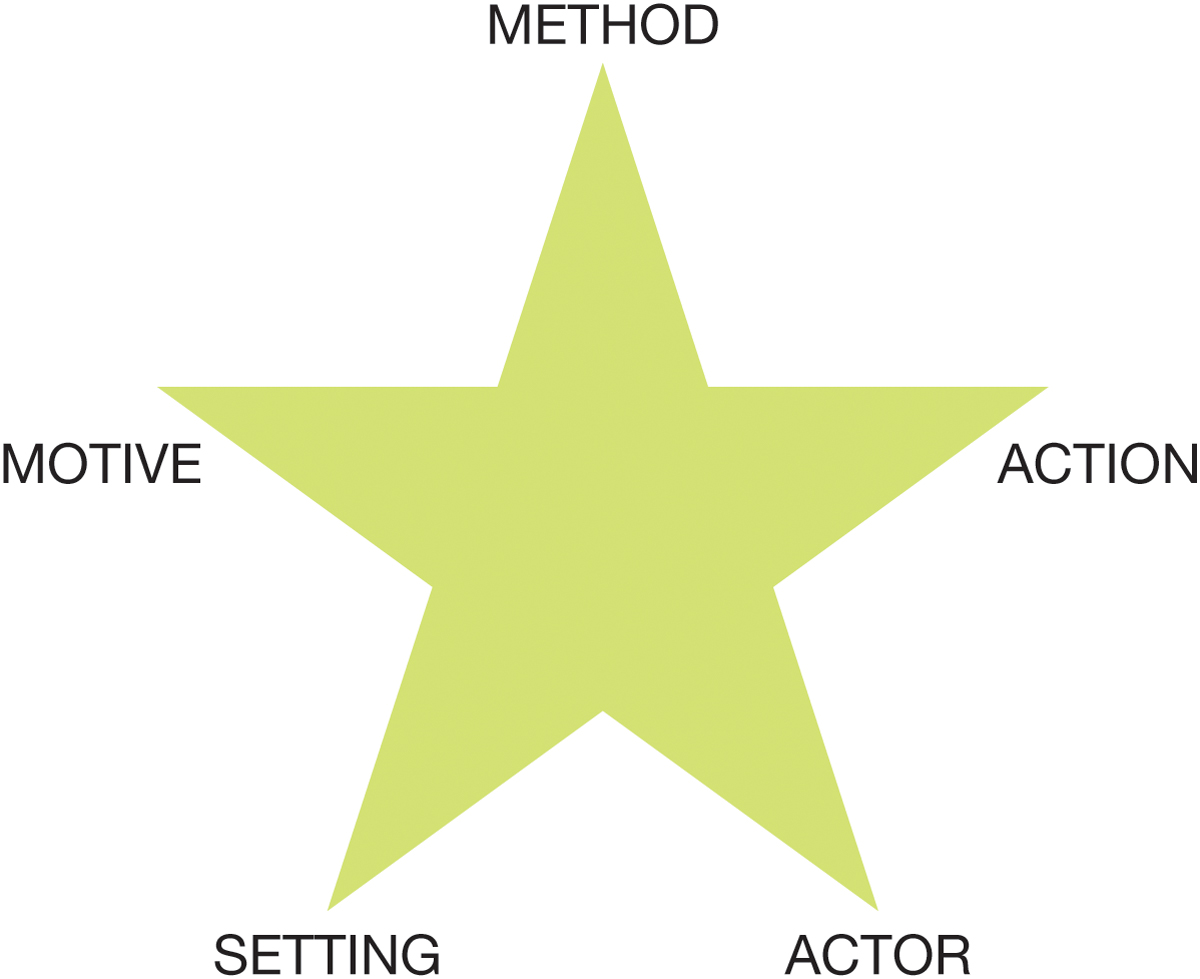Use dramatizing to analyze behavior.
Dramatizing is an invention activity developed by the philosopher Kenneth Burke as a way of thinking about how people interact and as a way of analyzing stories and films. Thinking about human behavior in dramatic terms can be very productive for writers. Drama has action, actors, setting, motives, and methods. A five-

Action Action answers the question “what?” An action is anything that happens, has happened, will happen, or could happen. Action includes events that are physical (running a marathon), mental (thinking about a book you have read), and emotional (falling in love).
Actor The actor answer the question “who?” The actor is either responsible for or affected by the action. The actor may be anything that causes an action. For example, if the action is a rise in the price of gasoline, the actor could be increased demand or short supply. Dramatizing may also include a number of actors working together or at odds.
Setting Setting answers the questions “when?” and “where?” We usually think of setting as the place and time of an event, but it may also be the historical background of an event or the childhood of a person.
Motive Motive answers the question “why?” The motive is the purpose or reason for an action—
Method Method answers the question “how?” The method explains how an action occurs, including the techniques an actor uses. It refers to whatever makes things happen.
This list answers the questions reporters typically ask. But dramatizing goes further: It enables us to consider relations among these five elements. You can also use this invention strategy to analyze the readers you want to inform or convince.